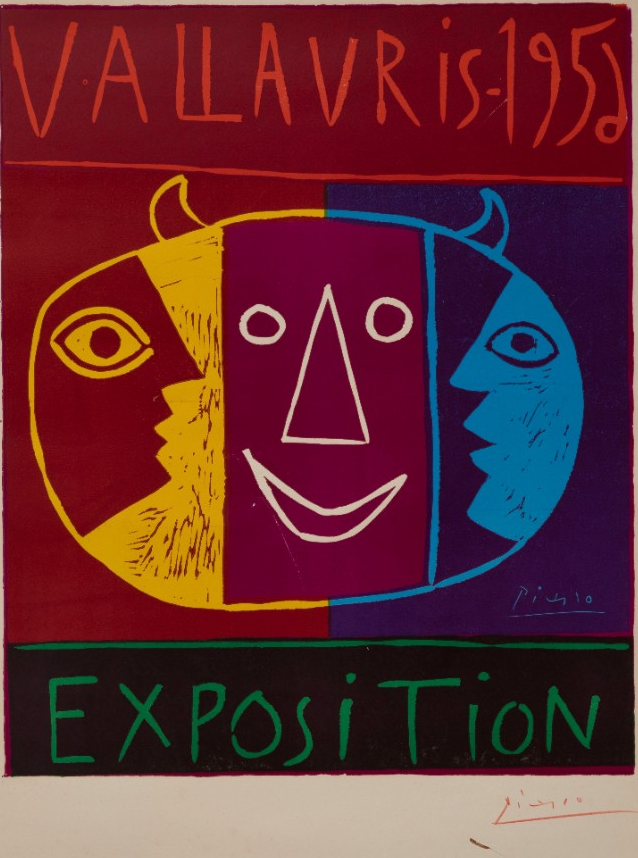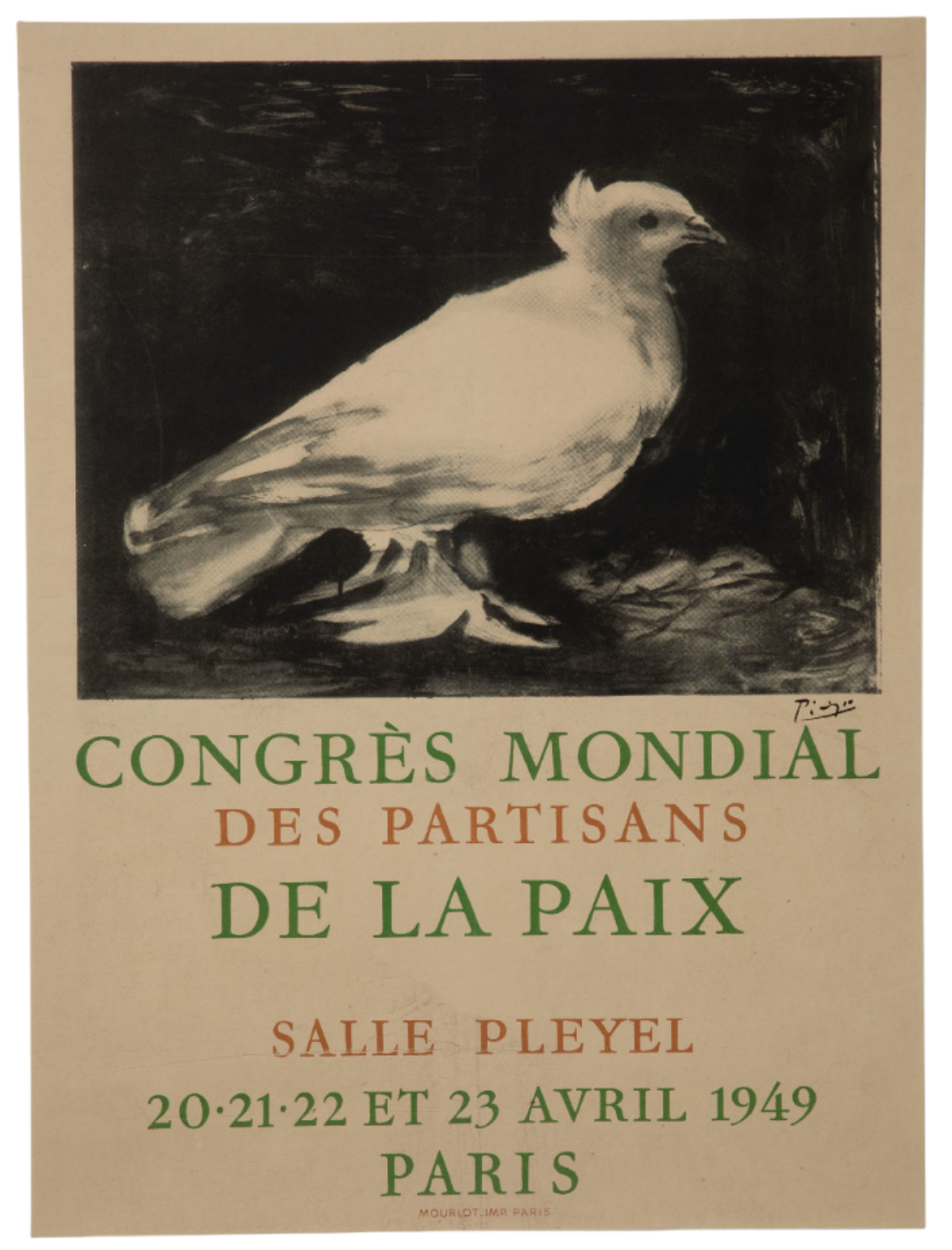Picasso x Picasso
the art of the multiple
July 5 - September 29, 2025
An event with two concurrent exhibitions
"Picasso, His Posters"
"Picasso Ceramics,
The Techniques of Multiples"

Pablo Picasso, Vallauris Exhibition 1956, 1956, original poster, five-color linocut, edition of 200 copies, printer: Arnéra, Vallauris, H. 99 x W. 66 cm (image H. 65.5 x W. 53.5 cm), Werner Röthlisberger Collection.
© Succession Picasso, Paris, 2025
In the summer of 2025, the Magnelli Museum of Ceramics invites visitors to explore the multiple in Pablo Picasso's work. This theme, essential to the artist's creative process, demonstrates his constant interest in reproduction and variation, going beyond simple technical reiteration to become a true field of artistic experimentation.
From the first decades of the 20th century, Picasso was interested in the question of the multiple, particularly through cast copies of his sculptures and engravings. However, far from viewing reproduction as a simple technical process, he used it as a tool for research and innovation. Thus, in 1914, the sculpture "Glass of Absinthe" was produced in a limited edition of six. Each one was uniquely painted by the artist.
The multiple allowed Picasso to explore different variations of the same theme, sometimes in different media, offering a means of examining the artistic potential of the same subject. This is not a simple variation, but a true creative reflection, each variation bringing a new visual dimension to the work.
After the Second World War, the question of the multiple acquired new resonance in Picasso's work. His involvement in the French Communist Party and his desire to make art accessible to as many people as possible influenced his approach to artistic reproduction. This desire was particularly evident in Vallauris. In 1949, he donated one of three bronze casts of Man with a Sheep, a sculpture created in 1943, to the town so that "one of his works may live among the people of Vallauris," thus affirming his desire to see art integrated into public spaces. In this pottery-rich city, two mediums in particular allowed him to deepen his reflection on the multiple: posters and ceramics. Through these media, Picasso combined accessibility and experimentation, exploiting reproduction techniques to disseminate his art while renewing its forms and motifs.
 Pablo Picasso, Tripode, 1951, large turned vase, edition of 75 numbered copies, copy 43/75, Madoura, Picasso edition, authentic replica, AR 125, white earthenware, oxide decoration, engraved on white enamel, H. 75.5 cm x D. 23 cm, Magnelli Museum Collection, Ceramics Museum, Inv. D.2021-2-4 Photo: François Fernandez © Succession Picasso, Paris, 2025
Pablo Picasso, Tripode, 1951, large turned vase, edition of 75 numbered copies, copy 43/75, Madoura, Picasso edition, authentic replica, AR 125, white earthenware, oxide decoration, engraved on white enamel, H. 75.5 cm x D. 23 cm, Magnelli Museum Collection, Ceramics Museum, Inv. D.2021-2-4 Photo: François Fernandez © Succession Picasso, Paris, 2025In order to explore this unique relationship between Picasso and the art of the multiple, the Magnelli Museum, a ceramics museum, is offering two complementary exhibitions:
Picasso, His Posters
Curated by Céline Graziani, Director of the Musée Magnelli, Ceramics Museum, and Werner Röthlisberger, collector.
Picasso's interest in posters began at the beginning of the century. However, the original posters were created between 1948 and 1971. For more than twenty years, he entirely designed or closely supervised posters for the causes and events with which he was associated. Two major collaborations stand out in this approach: Arnéra for linocuts and Mourlot for lithography.
The poster became the medium for a new graphic language in which Picasso explored the question of typography and redefining the relationship between image and text.
In Picasso's body of posters, three categories can be distinguished:
- Posters where both drawing and text are by the artist's hand. - Posters made from original prints with letters accompanied by typographical characters.
- Posters with an illustration by the artist.
The first two categories are considered original posters.
 Pablo Picasso, World Congress of Partisans of Peace, 1949, original poster, offset print, edition of 2,500 copies, printer: Mourlot, Paris, H. 60 x W. 40 cm, Werner Röthlisberger Collection.
Pablo Picasso, World Congress of Partisans of Peace, 1949, original poster, offset print, edition of 2,500 copies, printer: Mourlot, Paris, H. 60 x W. 40 cm, Werner Röthlisberger Collection.© Picasso Estate, Paris, 2025.
Picasso Ceramics: Techniques of Multiples
Curated by Harald Theil and Salvador Haro, art historians specializing in Picasso's ceramics.
Between 1947 and 1971, Pablo Picasso produced a substantial collection of ceramics, estimated at between 3,500 and 4,000 unique pieces. They were all made in Vallauris, in the Madoura studio.
By moving to Madoura, Picasso monopolized the studio's material, technical, and human resources. Suzanne Ramié, the studio's founder, was then forced to temporarily suspend her own work. Picasso offered to have his ceramic work produced. Of the thousands of ceramic pieces created by Picasso, 623 models were produced exclusively by Madoura. The models were jointly chosen by Picasso and Suzanne Ramié based on the technical possibilities of reproduction.
The exhibition will explore the two different technical processes used to create the editions. Through the works presented, Picasso's creative process in the field of ceramics will also be highlighted.

Pablo Picasso, Jacqueline at the Easel, 1956, round platter, edition of 200 numbered copies, copy 197/200 Madoura, Picasso edition, original print, AR 333, white earthenware, slip decoration, partial brush underglaze, gray patina, D. 42 cm, Magnelli Museum Collection, Ceramics Museum, Inv. 2020-1-1
Photo: François Fernandez © Succession Picasso, Paris, 2025.


ROYAL ARTS VISIONS; Picasso x Picasso: the art of the multiple